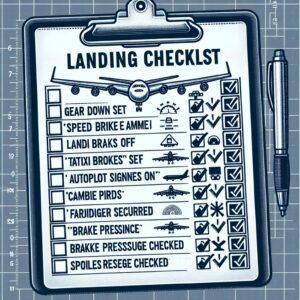Air Traffic Control in a Membership Organisation
The invention of the Radar
When an area has few flights and limited air traffic, coordination is unnecessary, and pilots can manage their navigation independently.
Pilots follow an agreed roadmap to reach their destination, just as an organisation with few programs or projects can use a well-built strategic and technology roadmap to provide focus and guardrails for PMs and sponsors.
We started this engagement with the establishment of this Portfolio (Radar) view for the client. Some of the larger changes provided more detailed information, ensuring good visibility of usual constraints. Smaller changes required only basic information to avoid collisions with other changes - projects or programs.

Prioritisation
Runways at airports are usually the biggest constraint, especially when a flight causes problems and blocks other planes from landing on the same runway. Therefore, Air Traffic Control prioritises flights based on pre-agreed criteria when they request takeoff and landing.
An ePMO is similar, helping to prioritise projects and programs based on criteria developed with leadership teams.
This criteria is based on the organisation’s strategic vision and objectives. For this client, resources were the biggest constraint, so we mapped the priorities against the resource needed from each team, to help them prioritise which project to support first and where additional investment might be needed for the collective change effort.
Establishing the Lifecycle Checklist
A flight has standard stages: boarding, engine start, takeoff, destination reach, landing, and disembarkation. So do projects and programs in a portfolio.

Flights vary in planning. Some, especially longer ones, have fixed destinations and detailed plans for reaching them. Others are more agile, requiring controls for safe landing but allowing for more flexible passenger travel.
Similarly, change lifecycles differ in nature. Large-scale programs require strong controls, pre-planning, and design, while agile changes focus on less upfront planning and design.
For this client we established a standard lifecycle approach for change leaders, PMs, and sponsors, ensuring consistency across the portfolio and appropriate control at each stage.
Flying a Boeing 747 is complex, requiring intense procedures, controls, and checklists. In contrast, gliders and small aircraft are simpler with less convoluted checklists.
Establishing the checklists for stage gates in a portfolio is equally important. A PM and Sponsor will often need to rely on reminders, which can be presented as a checklist of things that have to be true before passing through to the next stage. At this client, we established a risk-based stage gate review process, helping PMs and Sponsors use the checklist as a communication tool to ensure there is a clear and transparent depiction of what has been achieved and any remaining risks.The real benefit of a journey
Some believe the journey’s value is equal to the destination. For plane enthusiasts, the journey can be fun. The real magic is the destination, whether a holiday or meeting loved ones. Regardless of the flight’s turbulence, cost, or difficulty, focusing on the destination’s value is crucial.
Programs and projects can be the same. PMs and sponsors should keep in mind that there are benefits at the end of a change journey, and having clear sight of these benefits and establishing a way to record and measure them, is important.
At this client we established a consistent method for capturing planned benefits from a project or program, baselining and measuring them, and using a single source for future forecasting and budgeting.

The Team: Collaborating for Success
Pilots work as a team with ground staff and Air Traffic Controllers to ensure safe and efficient travel and this collaboration extends to a portfolio, involving PMs, PMOs, sponsors, leadership teams, and central coordination, sometimes referred to as an enterprise PMO (ePMO) or Air Traffic Control (ATC).
The difference between PMO in a programme and ePMO is the equivalent of the difference between Flight Engineer/Navigator (PMO) and Air Traffic Control(ePMO). The PMO would provide the information, controls and navigation for a specific Project. Supporting the PM and Sponsor to ensure they have the right information and controls needed to manage successful delivery. The ePMO will be capturing the information across the portfolio – bringing together telemetry and critical information across all of the changes in the portfolio.PMO in a program and ePMO differ like Flight Engineer/Navigator and Air Traffic Control. PMO provides information, controls, and navigation for a specific project, supporting the PM and Sponsor to manage successful delivery. ePMO captures information across the portfolio, integrating telemetry and critical data from all portfolio changes.
Our team did not work in isolation either. We established and embedded ourselves into the Central ePMO, helped establish the community of PMs and PMOs. Across this community, we built the relationships needed to drive consistency and collaboration. Through this, we have been able to work together to drive consistency and improve delivery certainty.When things go wrong
Not all flight journeys are smooth. Bad weather, mechanical issues and various other factors can make a flight quite uncomfortable. These turbulent times are often a part of the plane journey and history of safety initiatives in flight travel has taught us:- Record as much as possible
- Try to predict what might go wrong and prepare to avoid or deal with the risk
- Do not blame, learn
- There are appropriate controls, documentation and governance that guide progress and decision making. Recording in a proportionate way.
- Proactive view of the future path, risk and constraints that individual projects/programmes and portfolio needed.
- Establish a learning culture, giving PMs and Sponsors the encouragement and support needed to openly discussed the issues they faced and how lessons could be learnt for future changes.
Building Long-Term Success
Our engagement came to an end at the client, after almost 19 months of working hand in glove with the client teams. Our Air Traffic Control analogy aside, we spent a material amount of effort in establishing the right operating model, ways of working and culture for managing change effectively across the portfolio. It would therefore have been a real shame if we only managed to “leave footprints in the sand”. This has been avoided through:- Embedding ourselves into the team – working very closely with the client’s Central ePMO team.
- Planning early for the end of engagement – ensuring there is a clear handover plan with agreed checkpoints that test how well the team will continue the journey of evolution after we leave.
- Agreed the plan for checkpoints and catch up sessions, to keep helping the client on the journey.
Conclusion: My takeaways
The engagement with this client has been as educational for me, as it may have felt for the client. I have learnt and have reinforced in my mind the following:- Visibility is a key first step. If you are flying blind it is likely to be a painful journey. Visibility should be as wide ranging as possible, giving you a proportionate level of detail/information about every change in the organisation.
- Priorities should be linked to the strategic vision and objectives and related key criteria. Once these are clear, then they should be mapped against the most critical constraints.
- Establishing the Lifecycle and associated Checklists to ensure there are appropriate and consistent controls in place to manage the risk of something going wrong and something being missed.
- If there is no benefit in a change, then it is not worth doing. If there is, then it is worth documenting it and measuring it. And across a portfolio, the benefits need to be retained and used for forecasting and budgeting.
- Collaborate, rather than control. Policing an activity is far more effort than getting buy-in and commitment.
- When things go wrong, ensure you give people the safe space to raise the lessons learnt and ensure future changes can learn from these.
- Continue the maturity journey – hear the feedback and evolve as the team collective learns to be better.


